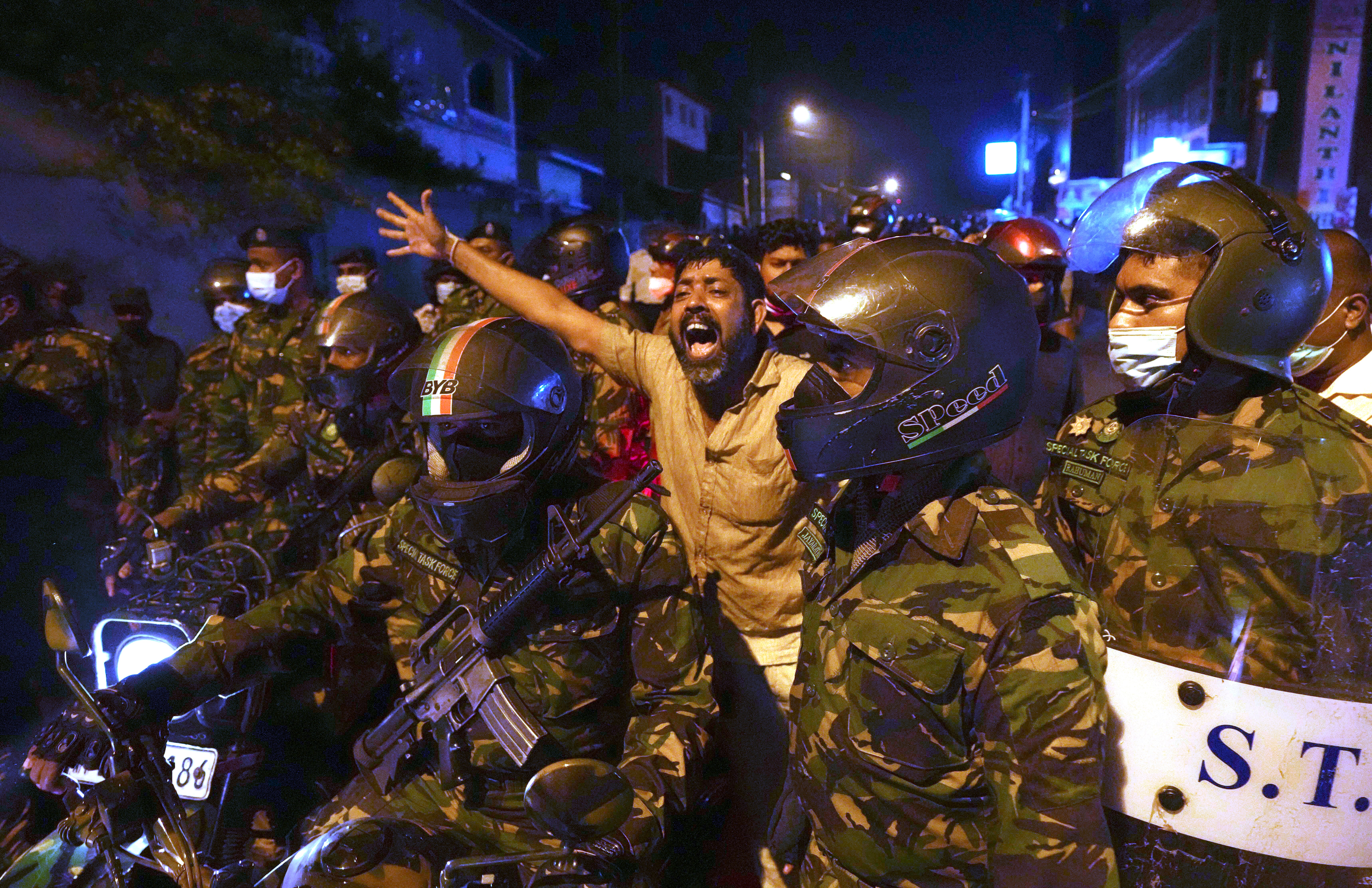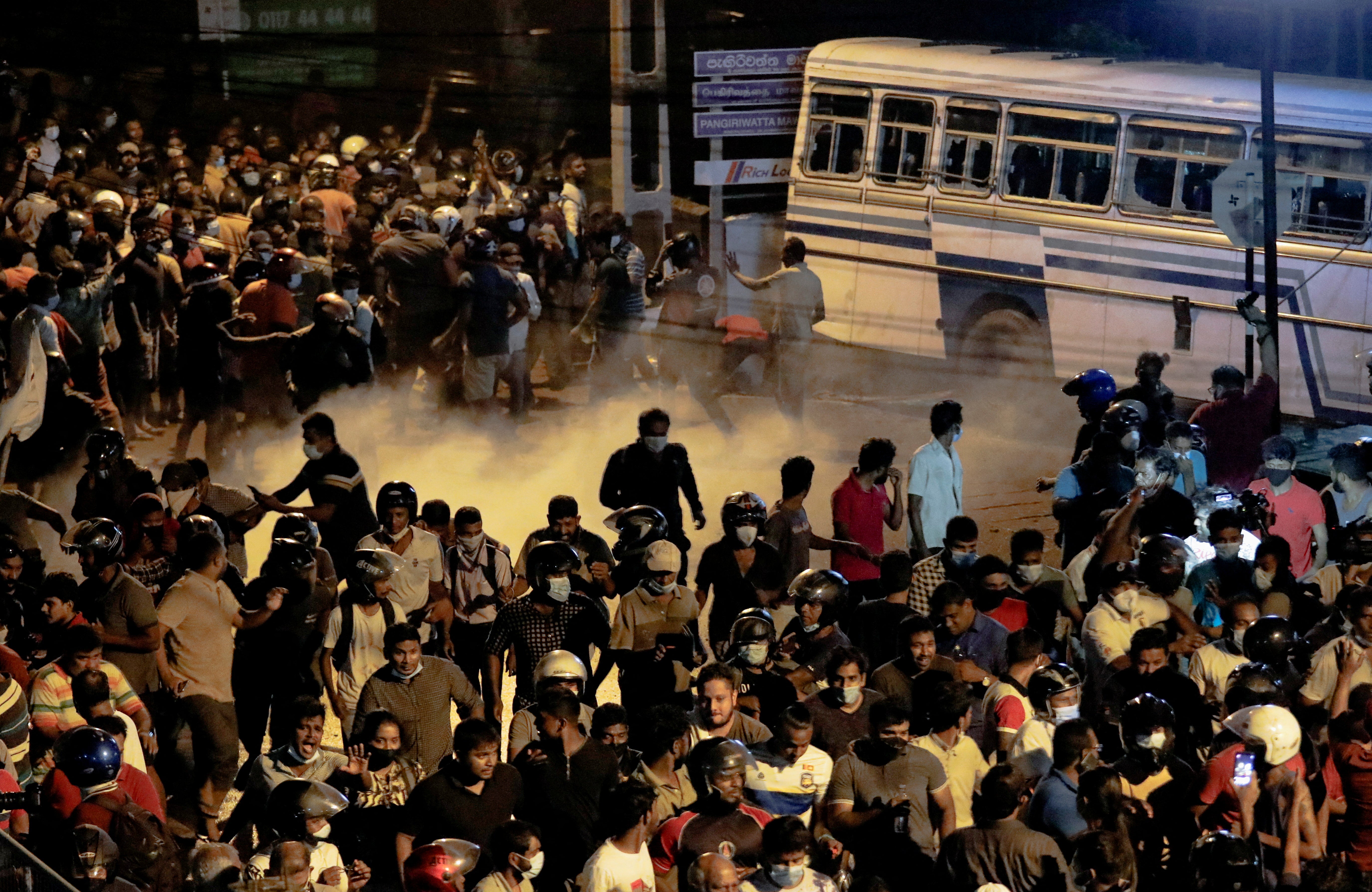Sri Lanka economic crisis: Dozens injured as angry protesters try to storm President Rajapaksa’s home
Forty-five people have been arrested as president blames protests on ‘organised extremist groups’
Your support helps us to tell the story
This election is still a dead heat, according to most polls. In a fight with such wafer-thin margins, we need reporters on the ground talking to the people Trump and Harris are courting. Your support allows us to keep sending journalists to the story.
The Independent is trusted by 27 million Americans from across the entire political spectrum every month. Unlike many other quality news outlets, we choose not to lock you out of our reporting and analysis with paywalls. But quality journalism must still be paid for.
Help us keep bring these critical stories to light. Your support makes all the difference.
Nearly 50 people were injured and 45 were arrested after hundreds of protesters tried to storm the private residence of Sri Lanka’s president, angry at the crippling shortage of basic commodities during a deepening economic crisis.
In the course of overnight protests on Thursday, a mob of hundreds of people demanded the resignation of Gotabaya Rajapaksa and his cabinet, shouting “go home, Gota go home”, and stormed through barricades in Mirihana, on the outskirts of capital Colombo.
Police fired teargas and water cannons as they tried to disperse the protesters, who reportedly resorted to arson and stone-pelting while pushing through the first line of barricades blocking the road to Mr Rajapaksa’s home.
Mr Rajapaksa was reportedly not at home as protesters attempted to break into his house.
The police said at least 54 people were detained until Friday morning, while the president’s office branded the protesters “organised extremists” trying to “create anarchy in the country”.
The violent protests forced authorities to impose an overnight curfew, which was lifted in the morning.
At least one person was severely injured in the leg after police fired teargas cannisters directly at protesters to stop their stone-throwing attack on a police bus.
Nearly 50 people, including journalists, were taken to hospitals.

Public anger appeared to reach a tipping point as the residents of the island nation with a population of 22 million have been facing extended 13-hour power cuts, and dire shortages of fuel, essential food items and medicines.
The Indian Ocean nation has been battling a severe foreign exchange crunch, the worst since its independence in 1948, leading to an acute shortage of foreign currency to pay for imports of food, medicine and fuel and even difficulty in generating power.
As a result, the country’s power minister is imposing record-long blackouts and has also ordered the switching off of street lights to conserve electricity. Further16-hour power cuts are expected in the future.
Dulaj Madhushan, 30, a protester, said it is not a politically-motivated protest, and lamented the power cuts. “How can people earn a living,” he asked. “This is not a political one, but a protest led by people. They took people for granted. Now you can see peoples’ power.”
Another protester, Asanka Dharmasinghe, 37, who runs a carpentry shed and employs four people, paying them each about $12 (£9.14) a day, said he is unable to cover the costs because he only has two hours of electricity to work.
“My daughter is sitting for exams, but there is no paper,” he said.

A statement by the president’s office blamed the protest on “organised extremist groups” whose members were armed with “ iron clubs, sickles and clubs”.
It also accused them of “spearheading the campaign calling for an Arab Spring in Sri Lanka”.
Amid shortages, the country has been forced to ration electricity for its people, publications have stopped printing newspapers and schools had to halt written exams, while soldiers had to be deployed at hundreds of state-run gas stations.
Hospitals have suspended routine surgeries and diagnostic tests as they were running dangerously low on vital medical supplies, anaesthetics and chemicals. They are saving what is left for emergency procedures.
Local news reports claimed that the president and his ministers did not feel the brunt of power cuts and have continued to lead a wealthy lifestyle, which has increased anger among the public.
The Rajapaksa family has ruled the island for decades and the president’s brothers hold the top ministerial positions, including posts of finance minister, prime minister and agriculture minister.
According to the Central Bank, inflation rose to 17.5 per cent in February from 16.8 per cent a month earlier. It’s expected to continue rising because the government has allowed the local currency to float freely.
Additional reporting by agencies

Join our commenting forum
Join thought-provoking conversations, follow other Independent readers and see their replies
Comments